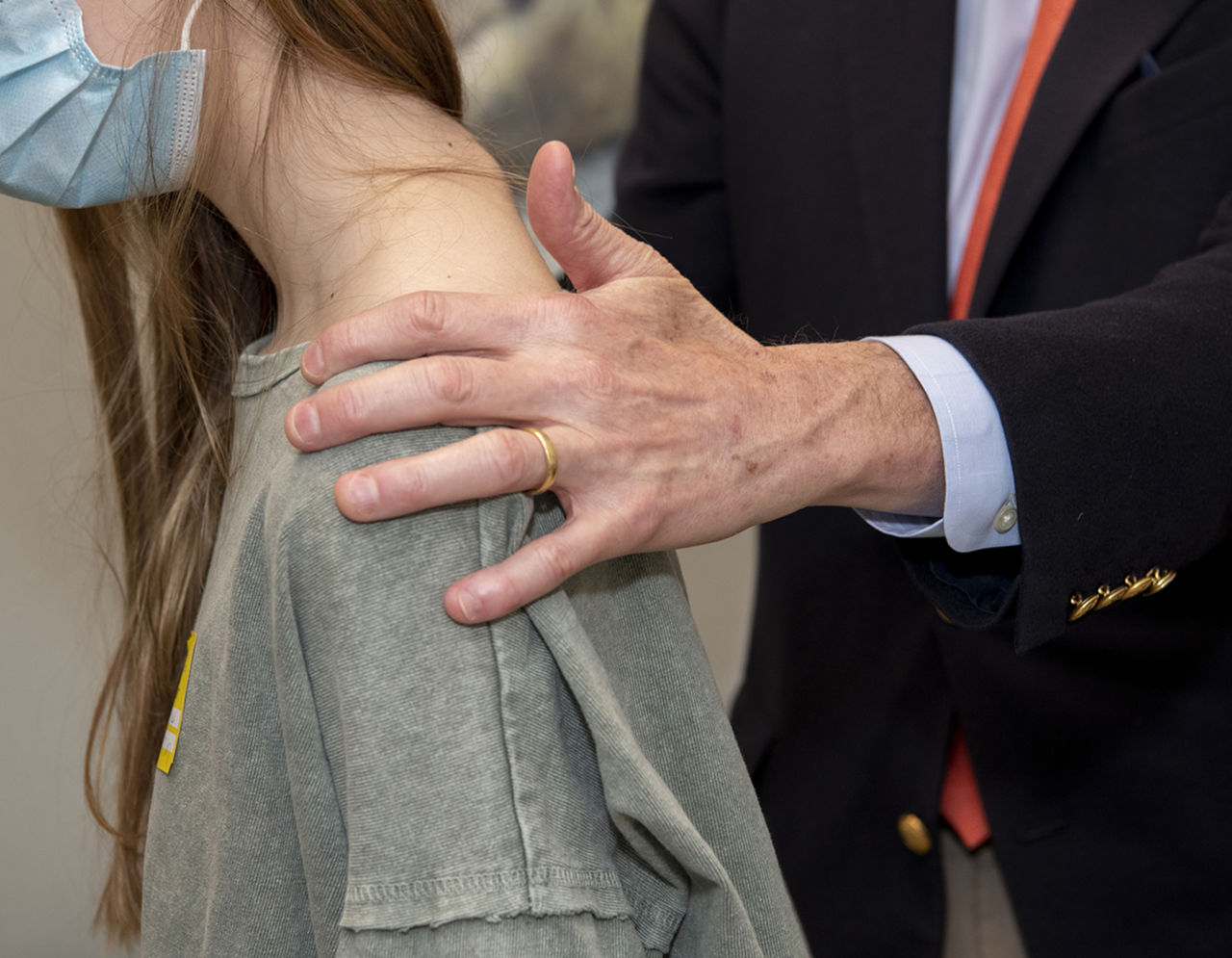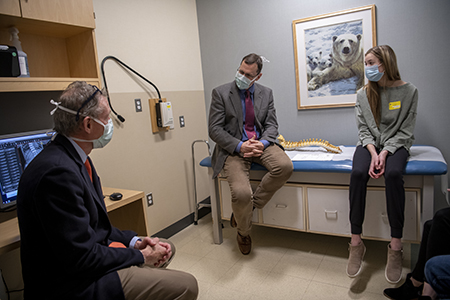-
- Find Care
-
- Visitor Information
- Find a Location
- Shuttles
- Visitor Policies
-
-
- Our Virtual Care Options
- Virtual Urgent Care
- Virtual Visits for Primary & Specialty Care
- Online Second Opinions
- Participate in Research
-
- Contact us
-
- For Innovators
- Commercialization Guide for Innovators
-
-
- Research News
- Alzheimer's Disease
- Artificial Intelligence
-
- Overview
-
- Overview
- Getting Started
- New to Mass General Brigham
- International Patient Services
- What Is Patient Gateway?
- Planning Your Visit
- Find a Doctor (opens link in new tab)
- Appointments
- Patient Resources
- Health & Wellness
- Flu, COVID-19, & RSV
- Billing & Insurance
- Financial Assistance
- Medicare and MassHealth ACOs
- Participate in Research
- Educational Resources
- Visitor Information
- Find a Location
- Shuttles
- Visitor Policies
- Find Care
-
- Overview
- Our Virtual Care Options
- Virtual Urgent Care
- Virtual Visits for Primary & Specialty Care
- Online Second Opinions
-
- Overview
- Participate in Research
-
- Overview
- About Innovation
- About
- Team
- News
- For Industry
- Venture Capital and Investments
- World Medical Innovation Forum (opens link in new tab)
- Featured Licensing Opportunities
- For Innovators
- Commercialization Guide for Innovators
- Contact us
-
- Overview
- Information for Researchers
- Compliance Office
- Research Cores
- Clinical Trials
- Advisory Services
- Featured Research
- Two Centuries of Breakthroughs
- Advances in Motion (opens link in new tab)
- Brigham on a Mission (opens link in new tab)
- Gene and Cell Therapy Institute
- Research News
- Alzheimer's Disease
- Artificial Intelligence
-
- Overview
-
- Overview
- Residency & fellowship programs
- Brigham and Women's Hospital
- Massachusetts General Hospital
- Mass Eye and Ear
- Newton-Wellesley Hospital
- Salem Hospital
- Integrated Mass General Brigham Programs
- Centers of Expertise
- Global & Community Health
- Health Policy & Management
- Healthcare Quality & Patient Safey
- Medical Education
- For trainees
- Prospective trainees
- Incoming trainees
- Current trainees
- Continuing Professional Development
- Patient Care
- International Patients
- Treatments and Specialties
- Orthopedic Care
- Vertebral Tethering
Overview
Most patients with progressive scoliosis are treated with spinal arthrodesis or fusion surgery. The goal of this surgery, also known as "posterior spinal fusion with instrumentation," is to create a solid "fusion" of the curved part of the spine.
This fusion is created by operating on the bones of the spine (vertebrae), manipulating and correcting some of the curve/rotation of the spine, adding bone graft and allowing the vertebral bones and bone chips to slowly heal together to form a solid mass of bone. Hardware (e.g., rods, hooks and screws) are placed in the spine to serve as an internal "cast" while the fusion heals and becomes solid. The bone graft may come from your hip (autologous iliac crest bone graft) or more likely from the hospital's bone bank (allograft). The spinal instrumentation left in your back should not cause any problems.
Mass General Brigham also offers AVT, also known as tethering or vertebral body tethering. This new and innovative treatment option is designed for patients with severe, progressive scoliosis who are contemplating surgery, but wish to correct their scoliosis without sacrificing spine growth, motion, or function.
In AVT, a flexible cord or "tether" is implanted in the back for gradual scoliosis curve correction. AVT is more physiologic than fusion surgery and avoids the creation of a rigid bone graft in your back. This minimally invasive approach allows for endoscopic treatment of thoracic curves and mini-open exposures for lumbar curves.
In contrast with the two-step procedure required for fusion, AVT requires only the instrumentation step. AVT surgery takes less time and leads to less blood loss and fewer implants. Post-operative recovery is faster, with decreased length of hospital stay and a faster return to a higher level of function. Experts believe that scoliosis correction with AVT may also be safer neurologically due to the flexibility of the correction and because correction occurs gradually.
Over the past several years, Mass General Brigham has performed more than 200 AVT procedures as well as hybrid surgeries that combine tether and fusion procedures for more complex spinal deformities. We care for more scoliosis patients than any other program in the country, and our outcomes are unmatched.
Pediatric scoliosis care and vertebral tethering
The children's orthopedics team at Mass General Brigham brings a coordinated team approach to pediatric scoliosis treatment and vertebral tethering. Three of our pediatric surgeons specialize in AVT, and they work alongside a team of other orthopedic doctors and advanced practitioners to deliver high-quality, compassionate care to every child and adolescent who walks through our doors. Our internationally recognized team of specialists integrates the latest musculoskeletal research, innovation and technology into their practice to constantly elevate their level of care.
If a doctor believes your child's scoliosis makes them a candidate for AVT, our team will start by evaluating their spine. We will then work with you to develop a treatment and rehabilitation plan that reflects your child's personal goals and returns them to activities as quickly and safely as possible. Every step of the way, your child will enjoy a comfortable and convenient patient experience and be treated like family.
Your Mass General Brigham vertebral tethering team
Vertebral tethering for international patients
Each year, thousands of patients from more than 120 countries travel to Mass General Brigham for medical care, second opinions and treatments unavailable anywhere else in the world.
Mass General Brigham orthopedic teams are experienced in caring for complex ankle and ankle replacement patients who are traveling great distances to our hospitals in Boston. Your medical team here and our international patient services team will help you prepare for and plan the appropriate amount of time to stay in Boston before and after your treatment or surgery. During this recovery time in Boston, our clinical team will monitor your healing and medications and prepare you for the rehabilitation stage of your care. Your Mass General Brigham care team will work with you and your providers at home to ensure you receive the properly scheduled follow-up appointments and a rehab physical therapy program that is right for you.
Many of our international patients have questions about everything from travel and lodging to scheduling appointments. Our international patient services team is here to help. We look forward to making your Mass General Brigham experience as healing and stress-free as possible.

